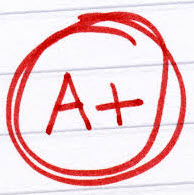 On September 5, 2017, the U.S. House of Representatives overwhelmingly approved a bill that would allow already-public reporting companies to use the provisions of so-called Regulation A+ to make securities offerings. Regulation A+ in its current form is, in essence, a mini-IPO, allowing private companies to raise up to $50 million, offerings that are too small to attract the interest of large investment banks who underwrite traditional registered IPOs. If the current bill is enacted, public companies could take advantage of this process, which involves somewhat less disclosure than required for a full Form S-1 registration statement.
On September 5, 2017, the U.S. House of Representatives overwhelmingly approved a bill that would allow already-public reporting companies to use the provisions of so-called Regulation A+ to make securities offerings. Regulation A+ in its current form is, in essence, a mini-IPO, allowing private companies to raise up to $50 million, offerings that are too small to attract the interest of large investment banks who underwrite traditional registered IPOs. If the current bill is enacted, public companies could take advantage of this process, which involves somewhat less disclosure than required for a full Form S-1 registration statement.
Even if this expansion ultimately results in all public companies being able to use Regulation A+, as a practical matter, it would be useless to large, exchange-listed public companies, who can already use Form S-3 for securities offerings, which is a short form for registration that, by incorporating Exchange Act reports by reference, results in shorter filings even than for Regulation A+.
The obvious class of public companies that could benefit from this are the small ones that are not listed on NYSE or Nasdaq and can’t use Form S-3. Another type of company that could benefit are those that are listed on an exchange but are small, i.e., a market capitalization of less than $75 million for shares not held by company affiliates (the public float). Those companies can use Form S-3 for primary offerings, but they are limited one-third of the value of the public float per 12-month period. If those companies need to sell securities above that limitation, expanded Regulation A+ might be an attractive alternative to the current options (e.g., a full S-1 registered offering or a PIPE followed by a resale registration).